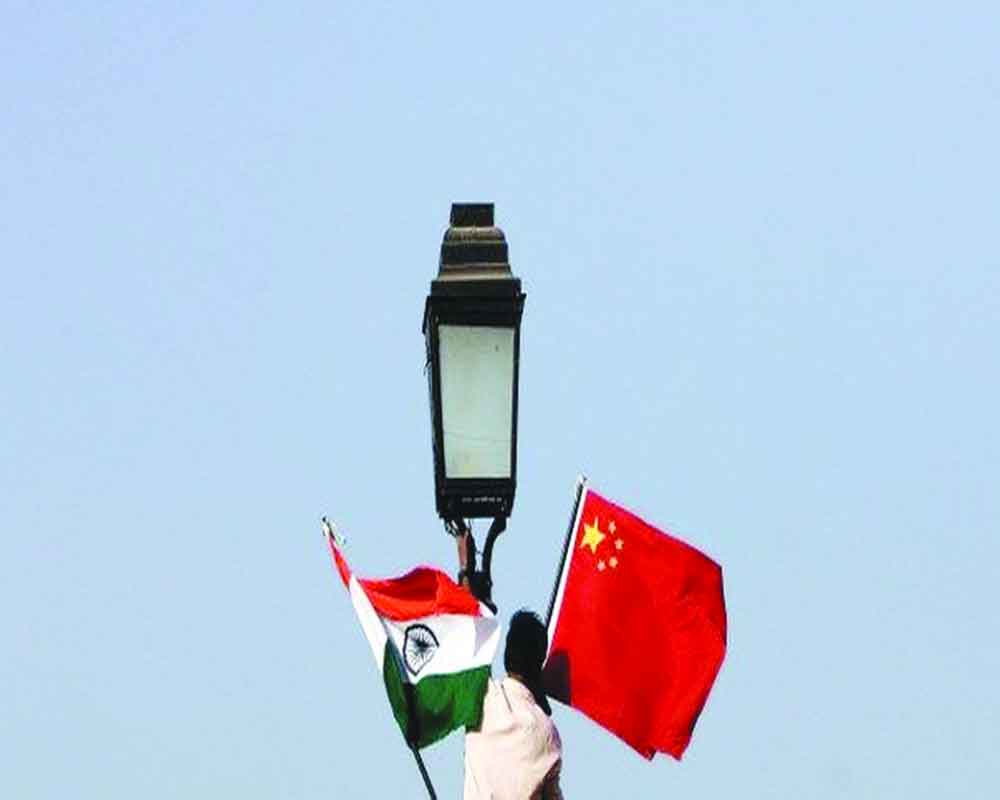
China at it, again
by PioneerUnusual aggression in Ladakh, the worst since Doklam, shows our neighbour is bent on arm twisting us in a post-pandemic world
China is becoming as vindictive as the US in getting its way with the world or countries that are dependent on its still viable factory floors. And it has chosen to get aggressive with India at a time when the latter is struggling to recover from the Coronavirus pandemic that not only originated in the former but was manipulated to keep the world in the dark. So the latest face-offs between Indian and Chinese troops at Ladakh, the worst since Doklam, the constant stoking of Nepal’s belligerence over a border road and our neighbour’s decision to fly out its citizens from India, ostensibly to save them from the viral spread here, are certainly more than just niggling misbehaviour, they are arm twisting and coercive tactics to get India to bow down. And they clearly signal that the famed Wuhan spirit, the informal dialogue between Chinese President Xi Jinping and Prime Minister Narendra Modi, has all but evaporated. Clearly, the economic concerns of both nations and geopolitics had made them tolerate each other on optics. The reasons for China’s impatience are not difficult to understand. Of course, there is the anger about India being a stumbling block in its imperialist Belt and Road Initiative, which is nothing but buying out smaller or weaker countries in the region by undertaking massive projects and sucking them into economic servitude as they fall into a debt trap and cannot repay loans. But recent triggers are many. First, there is the extreme discomfort over the abrogation of Article 370 and reorganisation of Jammu and Kashmir that converted Ladakh into a Union Territory. Direct Central intervention in Ladakh meant that New Delhi could not only monitor development, infrastructure and road building here better but keep an eye on the sensitive Himalayan border that China has been challenging over decades with incursions and staring down at our men. China looks at India’s recent connectivity efforts, particularly the Darbuk-Shayok-Daulat Beg Oldie (DSDBO) Road, with some suspicion, considering the easy access it could give to the Karakoram pass and enhance the supply and replenishment links to troops stationed here. A weakened Ladakh would give it the strategic advantage and hence keeping it hot would mean cessation of development and retaining the preparedness advantage of the Chinese forces. Second, there is the growing US-India strategic partnership, one which is strong-arming China’s domination of the South China Sea and one which could see some US businesses shift bases here from China post-pandemic. It will, therefore, do everything to challenge a new and exclusionary power alignment in the region. Third, as China is on an acquisition spree of businesses and banks in COVID-hit economies of the world, India stalled it by amending its foreign direct investment (FDI) rules to mandate Government approval for all investments from “border” countries and prevent hostile takeovers. And four, India cancelled orders for Chinese test kits as they were faulty, switched to South Korea and other nations and is even supporting a global impartial probe into the Wuhan contagion that is expected to reveal ugly truths about official mismanagement. That China is hitting back at countries spearheading the growing narrative against it is evident from the way it is targetting Australia over barley tariffs. And now that COVID-19 has sent us into an economic tailspin, China has found our weak spot to up its stakes.
The Chinese troops this time have gone beyond the occasional skirmish, frequently pelting stones, amassing troops, building camps and injuring Indian soldiers. Be it the confrontations at three outposts in Ladakh or at Nakula Pass in Sikkim, our men in uniform have been outnumbered as they have been conducting recces as part of normal patrols according to established protocol. But the Chinese have disregarded norms and assumed battle-ready manoeuvres. What is worrisome is that they are pushing into newer areas which are far away from the Line of Actual Control (LAC) and hence not disputed like the Galwan river valley, the ‘Finger’ areas of Pangong Tso and Demchok in Ladakh and Nakula Pass. In fact, there has been no confusion over Galwan ever since the 1962 war but it looks like China is threatening to change the situation on the ground according to its claimed positions. Clearly, the eyeball to eyeball confrontationist attitude is meant to intimidate India and warn it that any change in global diplomacy and trade partnerships wouldn’t save it should China reignite the 3,488 km boundary it shares with us. The Doklam standoff lasted 73 days, this one is sparking hotspots along the Himalayan border. It is obvious China wants to foreground contentious boundary issues now that it has been hemmed in on other frontiers and faces a dipping market in India. The Wuhan spirit has been contaminated and only diplomacy and hard bargaining over mutual needs can perhaps save the day.